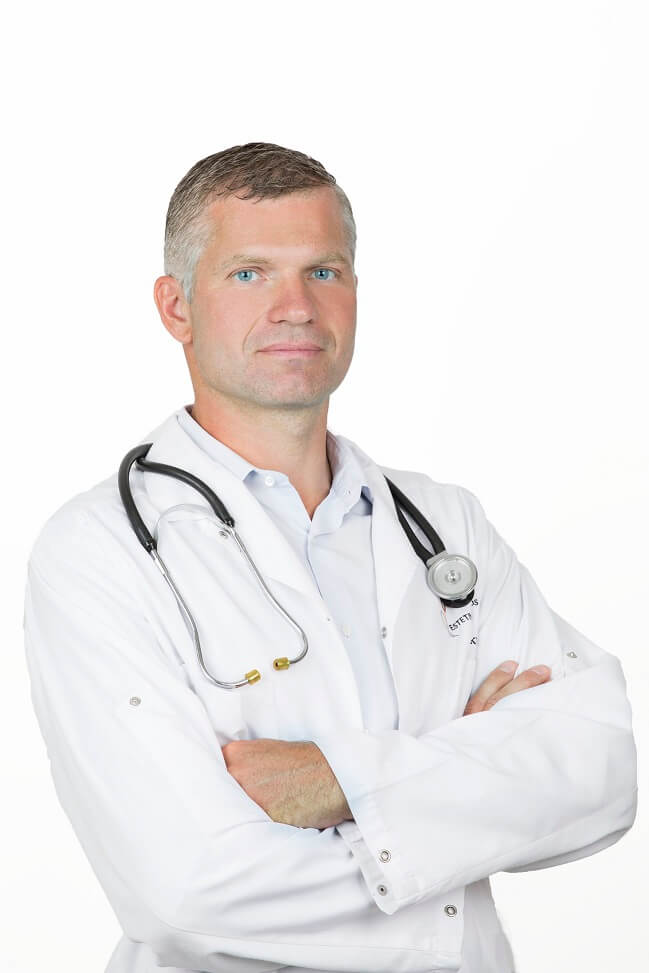Body lift
People who loose a lot of weight often have a lot of excess sagging skin, which makes body look unattractive and often creates a multitude of problems such as daily hygiene and finding clothes that fit properly. With significant weight loss over a relatively short period of time (usually 15-18 months), the remaining skin often does not retain the elastic qualities necessary to “shrink back down” to your new underlying shape.
Your plastic surgeon can help you realize the new shape that is hidden beneath the excess skin that remains after your goal weight has been achieved. An excess abdominal skin and a laxity of the muscles of the abdominal wall will necessitate abdominoplasty, while hanging skin under the arms will require arm lift (brachioplasty). Wrinkling and excessive bagginess of the thighs often requires lift of the inner thighs.
During your consultation, your plastic surgeon will assess your anatomy as well as your own priorities to help you develop a comprehensive plan for your body contouring. Women who have had a mastectomy should not have an arm lift. If you have had phlebitis (inflamed blood vessels) in either of your legs, you may not be a candidate for thigh lift surgery, as well. Of course, like any operation, there are potential complications, which will be explained by your doctor.
While you are standing, your plastic surgeon will make marks on the skin identifying certain landmarks as well as the intended incisions. It also allows you to review the operative plan one more time with your surgeon before undergoing the procedure.
General anesthesia is preferred for most of these procedures. Depending on the combination of procedures you choose, surgery will probably last between 2-6 hours. After the incision has been made skin and fat are elevated off the underlying structures. For a tummy tuck, the muscles of the abdominal wall are usually tightened. After removing the excess skin and fat, your plastic surgeon will redrape the skin over the underlying structures. One or more drains may be placed beneath the incisions, what assist in draining any fluid that may accumulate beneath the incisions and delay your healing.
For thigh lifts, excess skin is lifted and removed through incisions made in the inner thigh and/or high upper outer thigh. The incisions are extensive but are usually not visible when clothing is worn. Simultaneous lifting of the thighs and buttocks is done when necessary, though buttock lift is not a common procedure, because it requires leaving scars across the buttock or in the fold. This is usually not desirable and patients opt for liposuction instead.
Arm lift (brachioplasty) is designed to remove excess, sagging skin and fat from the upper-inner arms. The incision is generally placed within the upper-arm from the armpit to the elbow. If a patient has no loose skin of the upper-inner arms but only has localized areas of fat, then he or she may be a candidate for liposuction alone without removal of skin.
Compression garment is applied to the region of the body being treated. This compression garment helps support your incisions during healing, decreases postoperative swelling, and helps decrease any bruising that may occur. You should plan to wear this garment for three weeks following surgery. Most probably you will stay overnight in the hospital. You should be up and walking the day following surgery, although you will be sore for several days. Applying cold compresses or ice packs will reduce swelling and relieve discomfort. You will be able to shower in about week after surgery and you should be able to resume your normal daily activities within several days following surgery. All of your physical activities are allowed within three to four weeks of surgery. Your plastic surgeon will remove the drainage tubes within several days following surgery as the drainage decreases.
Potential complications include bleeding, infection and healing problems, which can lead to heavy scars. Some lack of symmetry also may occur. Because the skin is undermined, there is a slight risk of inadequate circulation and loss of some skin. This risk is greater in smokers and in patients with specific kinds of old scars. Patients should quit smoking for 14 days prior to and following surgery, and stop taking aspirin 14 days before surgery.
You will notice an improvement in your body contour immediately. However, your shape will continue to improve in the following weeks as the mild swelling subsides. As a result of your body contouring, you should be able to look as good as you feel and enjoy your new body shape.

